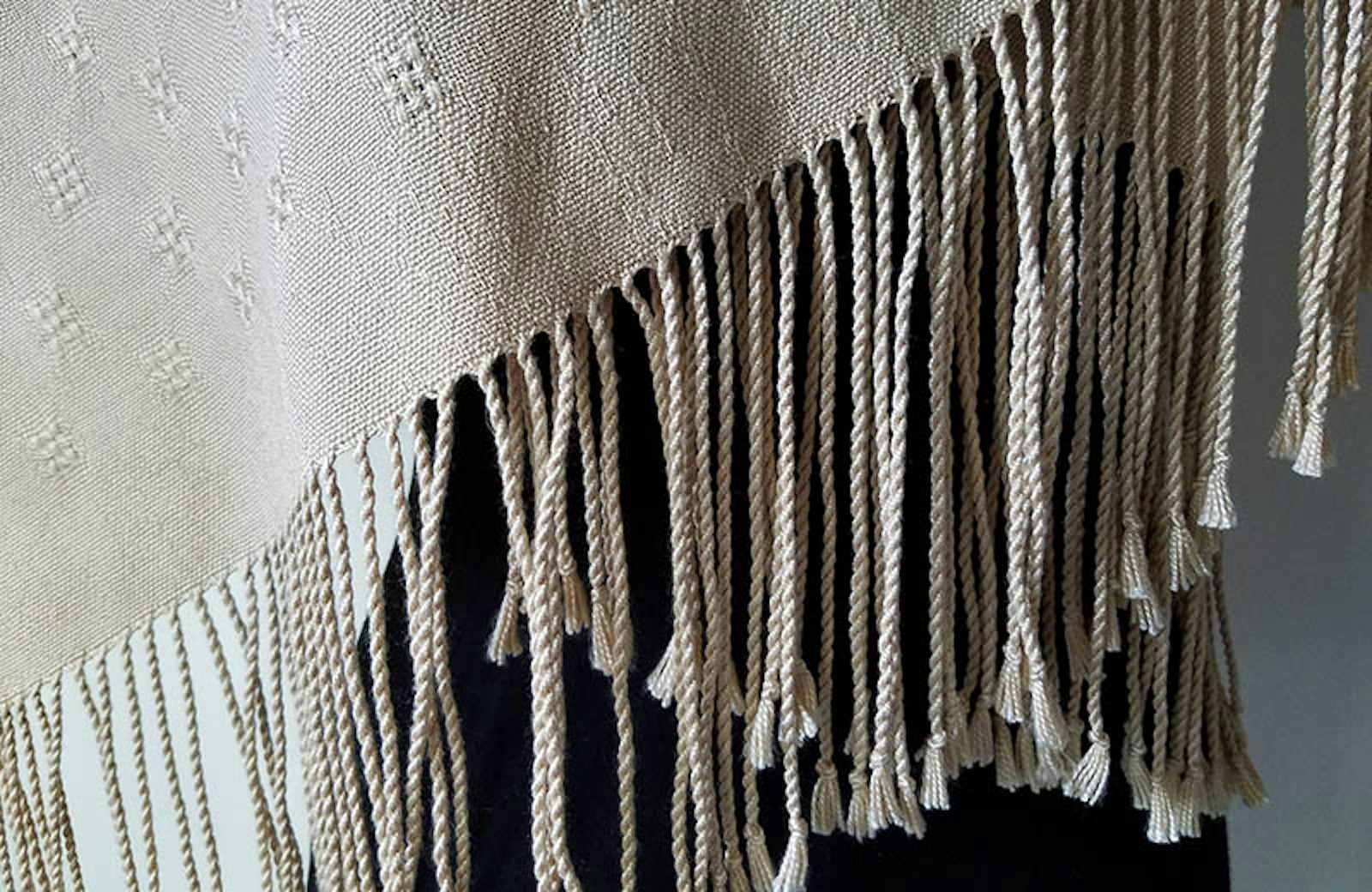I recently read a question on Facebook from a new rigid-heddle weaver asking the weaving community whether or not she should twist the fringe on her beautiful plain-weave shawl. Mostly I’m a lurker in those types of groups, but this time I piped right up: “Yes, absolutely, you should twist the fringe.” I always twist my fringe with a double-fringe twister.
There are several reasons I prefer twisted fringe to yarn fringe on my woven pieces. Except for the first one, these reasons reflect my own personal taste, but I don’t think I’m alone in my love for twisted fringe:
1) Plain fringe falls apart:
Plain yarn fringe will deteriorate over time. Yarn is made to be part of something, not to exist on its own without further manipulation. Untwisted fringe on a rarely used table runner might be fine, but any wearable should have stable fringe that won’t fall apart. Remember the phrase It’s going to be woven for a long time? That fringe is going to be part of that scarf for a long time. Why not make it durable?
2) The weft needs protection:
The weft needs to be protected to keep it from coming out of the warp, so if you aren’t hemming the end, or twisting the fringe, you must either hemstitch or tie knots along the edge of your piece. (Personal opinion: overhand knots don’t look very professional.) Use a bent-nose needle to hemstitch on the loom. Of course, once a piece is hemstitched you don’t have to twist the fringe to protect the weft, but many people still do. They like the combination of the clean tidy look of a hemstitched edge with twisted fringe. I do too.
Scarf with fringe mixed with weft colors
Photo credit: Susan E. Horton
3) You can color match the fringe:
If a scarf’s weft is a different color than its warp, plain-weave fringe looks awkward. For example, if the warp is black and the weft is white, the bottom will have a big swath of pure black yarn fringe, which looks strange to me. I like to incorporate strands of my weft into my twisted fringes so that they better match the rest of the piece. I guess this is another personal preference, but in all my years of selling scarves I’ve had only good comments about the twisted fringe on them.
4) Fringe length and thickness depend on the piece:
I match the twisted fringe to the piece. Wool blankets need thick, short fringe. I usually cut to 6" to prepare a 4" twisted fringe. For everyday scarves, I cut the fringe to 7" to make 5½" twisted fringe. A fancy silk scarf usually gets thin 6½" twisted fringe that starts out as 8" of plain yarn fringe. Sometimes twisting the fringe will make it look too thin; if this happens, tie in thrums or additional strands of weft before twisting. Just don’t make the fringe too thick: the swing of fringe on a scarf or shawl should be dramatic.
If you don’t currently twist the fringe on your weaving, I think you will be surprised at how it changes the durability, professionalism, and beauty of your pieces. If you’re ready to try twisted fringe, use a double-fringe twister. This very simple tool has an ingenious design that makes twisting fringe a breeze, and it only takes about a minute to learn to use it. In my opinion, all weavers should know how to use one.
“Absolutely, you should twist the fringe.”
Weave well,
Susan


